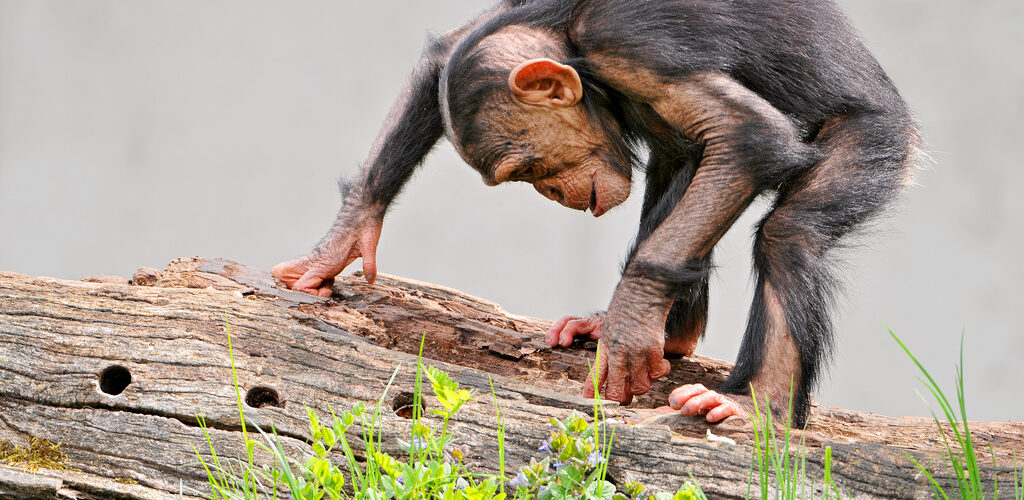Chimpanzee Culture

The chimpanzee, our closest living genetic relative, is proving to have a more diverse range of behaviours than what was once previously thought. They may not fully qualify as having their own ‘cultures’ compared to human standards, but denying them a form of proto-culture would be incorrect. In fact, an Africa-wide research programme called ‘The Pan African Programme: The Cultured Chimpanzee’ is investigating these cultures, mainly targeting 29 lesser-studied chimpanzee areas and using a standardised protocol to collect data on the availability of resources, demography, and behaviour.
Chimpanzees are known to display a variety of behaviours, often specific to their own local group. There is a group of chimpanzees in Mahale, Tanzania that utilises leaves as a tool to fish for termites. Another group in a nearby area don’t exhibit this behaviour – despite the availability of both leaves and termites. This example shows that there is a variation of behaviour that can’t be explained as simply environmental. In other words this particular instance of tool use is a culturally-learnt behaviour1.
In Guinea, West Africa, researchers in ‘The Pan African Programme’ discovered a novel and perplexing culturally learnt behaviour in chimpanzees2. Prior to the discovery a camera trap was installed near a tree that had suspicious markings. The camera caught chimpanzees individually making their distinctive pant-hoot vocalisation before throwing a rock at the tree, and into a stone-pile. This behaviour has no clear relation towards food or social status attainment. As the stone-piles are eerily reminiscent of the ‘sacred trees’ of indigenous tribes of West Africa, an intriguing question is raised: could this behaviour represent a symbolic ritual3?
Only four chimpanzee populations have been observed partaking in this behaviour, all of them situated in West Africa. It could merely be a male display, as banging a rock against such a tree could make a louder noise than the typical hand and feet drumming, yet there has also been sightings of female and juvenile chimpanzees participating. Another theory for this action is that it started off as a male display and as rocks accumulated at a particularly loud tree it condensed the local rock availability there; over time the stone-pile became independent of the initial behavioural reason, forming into a culturally passed on action akin to a tradition. A more symbolic and ritualistic reason is possible, although there is no scientific grounding that this action has any symbolic thought behind it4.
Continued research could give insight into the meaning of this behaviour. Examining where the tree is within chimpanzee territories, as well as comparing reactions to the ‘tree ritual’ with reactions to normal male display, could be invaluable. However, the ability to investigate more into these intriguing beings is becoming increasingly difficult, as human interference continues to threaten if not destroy the livelihoods of these chimpanzees. Failure to protect these stone-hurling chimpanzees will result in the shattering of a living window to our early past.
Want to get involved? Join a citizen science project by evaluating the masses of video taped from the camera traps at https://www.chimpandsee.org/
Edited by Sarah Spence
References
- An insight into the cultural aspect of chimpanzees https://www.newscientist.com/article/mg16221911-500-the-lore-of-the-jungle/
- Discovery of the behaviour, and the full scientific report of the programme https://www.ncbi.nlm.nih.gov/pmc/articles/PMC4770594/
- The stone-piles in relation to the ‘sacred trees’ of indigenous West African tribes http://www.npr.org/sections/13.7/2016/03/02/468875167/why-do-wild-chimpanzees-throw-stones-at-trees
- More information about the behaviour https://theconversation.com/mysterious-chimpanzee-behaviour-may-be-evidence-of-sacred-rituals-55512










